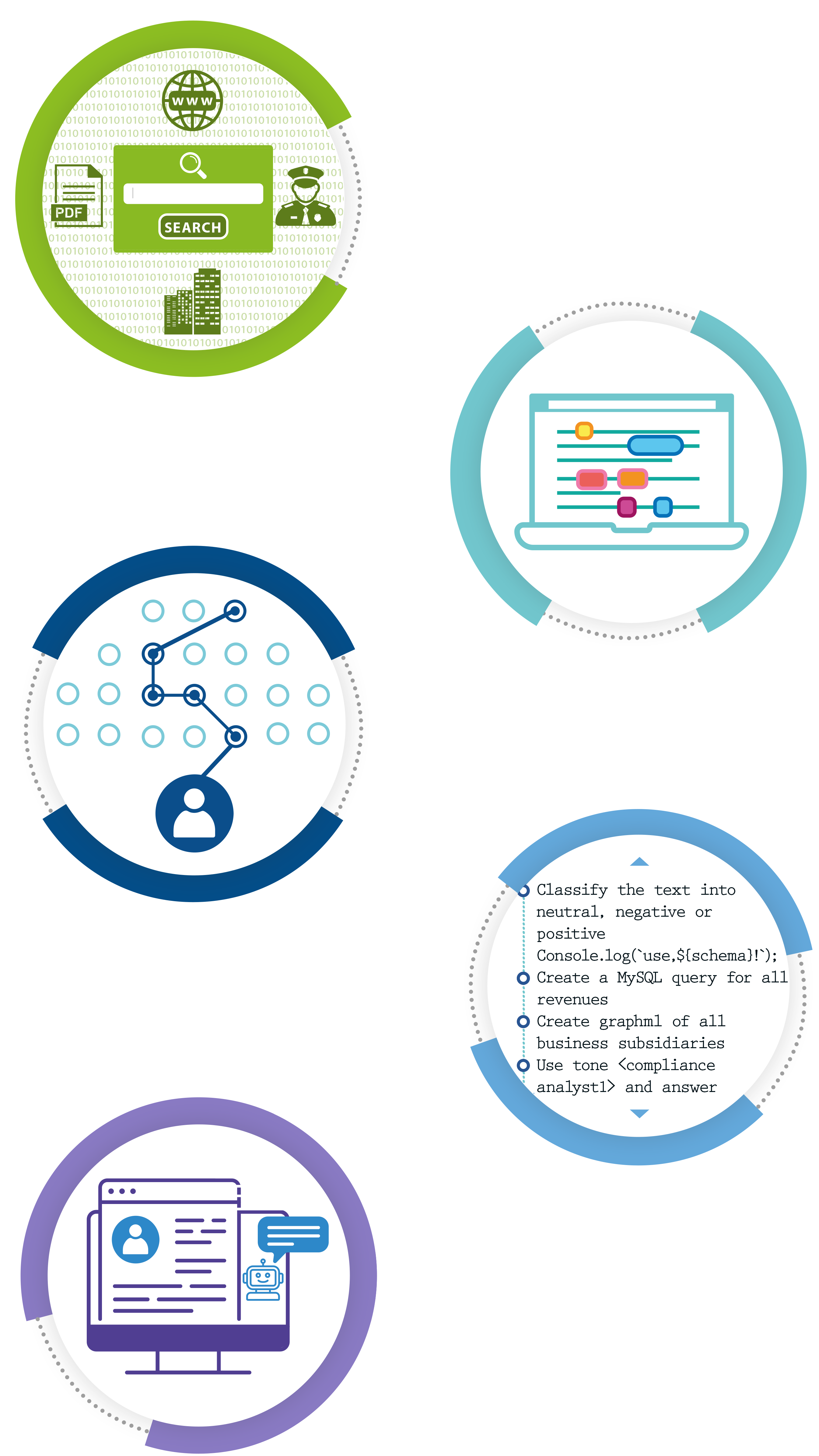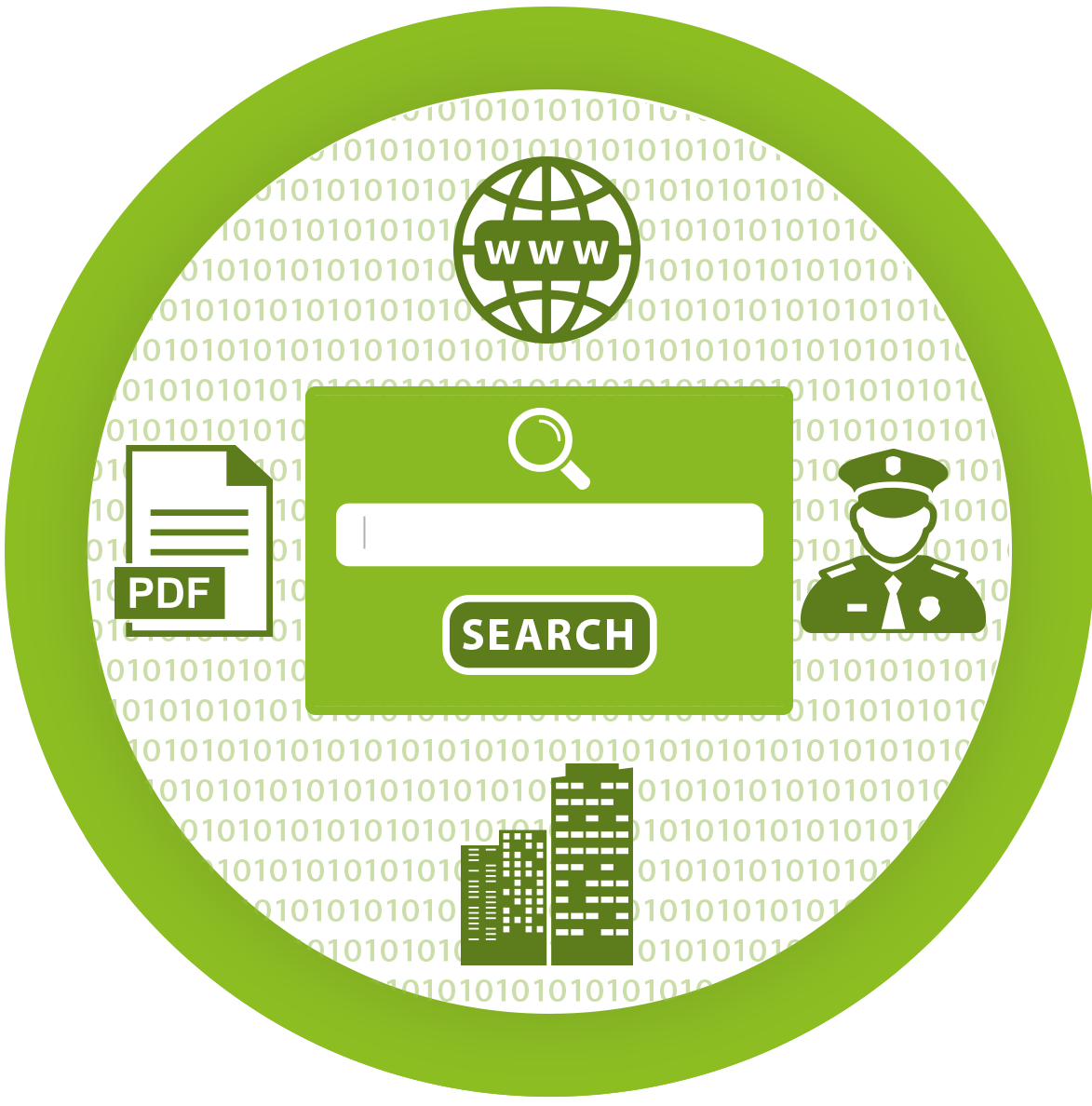We designed DeepDive in collaboration with a trusted panel of EDD and investigation experts. The most common questions we received were: 'How do you control and coach the AI?', and 'How do you trust the sources you use?'
Read our FAQ here.The DeepDive knowledge engine is fuelled by a unique blend of technologies



How does DeepDive work?

Search
NLP
Entity resolution
PROMPT ENGINEERING
KNOWLEDGE REPORT
Organisations are feeling the pressure of realising the operational benefits of AI. But business leaders need to know that the AI they’re bringing into their organisation is trustworthy and explainable.
-
Search: Our UI builds extensive search parameters


- Permutations of person details, keywords and related countries executes searches across multi-language, alphabet and engine parameters.
- Business search returns detailed company reports and widens investigation to company hierarchies and business associates.
-
Source collation: Automated creation of a large investigation dataset

%20.png?width=584&height=282&name=Data%20extraction%20(NLP1)%20.png)
- Hundreds of sources are parsed to remove code, images and adverts to create clean text files.
- Foreign language sources, compliance datasets and custom client sources are combined to maximise the investigation horizon.
-
NLP: Digests and analyses hundreds of search results

.png?width=584&height=320&name=Data%20digestion%20(NLP2).png)
- Natural Language Processing digests sources in any language.
- Named Entity Recognition extracts names, organisations, dates, and other structured entities from unstructured text.
-
Entity resolution: Removes false positives


- Graph-based, pairwise and hierarchical clustering algorithms correlate relevant sources and isolate sources not pertaining to the search terms.
- Resolved entities are subjected to an additional verification process using adversarial AI to ensure semantic relevance.
-
Body of Knowledge: Source verification and statement extraction

- Sources are scored based on credibility, publication date, reputation, and consistency with other sources.
- Prompt engineering extracts statements and assigns confidence scores for transparency on data reliability.
- All statements are merged into a single XML database and structured according to use case.
-
Report: Pre-defined output oriented to use case


- Summary of Key Findings: High-level overview of subject-related data.
- Categorized sections: Financial insight, legal matters, business affiliations, career summary, personal background.
- Risk Indicators: Contextual assessment of legal, criminal, financial, regulatory risk.
- Associated Entities and Networks: Connection mapping between subject entities, businesses, and individuals.
-
Chatbot: Interrogation of body of Knowledge


- Clients can get straight to the heart of the matter without reading the whole report.
- Provides context-aware responses using structured database statements with source citations.
- Chatbot answers can be easily copied into clients’ own systems.


.png)


